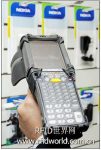
Implementation of RFID applications in mobile phone stores in the Middle East
[ad_1]
Future Communications Co. (FCC), which operates 35 telecommunications retail stores and service centers in Kuwait, recently implemented an RFID system at the Nokia mobile phone store in Arraya shopping mall. This RFID system not only speeds up and improves the inventory counting process, but also provides some other advantages.
The project was officially launched in 2006 and as a pilot project, it was the first RFID retail application in the Middle East and South Africa, according to the company. The company sticks EPC Gen 2 RFID tags on all electronic devices and accessories to test RFID applications at the cash register and inventory tracking applications in the supply chain. RFID solution provider Future RFID, the sister company of Future Communications, is responsible for implementing this system. The project results were satisfactory, so the retailer decided to continue to use RFID systems in operations.
When new products arrive at the Arraya store, employees label all items before they are sent to the sales hall. Paste the UPM Raflatac DogBone label on the mobile phone box, and paste the UPM Raflatac ShortDipole and Belt labels on the accessories. The FCC uses Motorola’s handheld and fixed readers to perform inventory counting, reducing the time required to collect inventory data to 20 minutes, compared to the previous manual inventory taking half a day.

FCC uses Motorola’s handheld and fixed readers to perform inventory counting
In addition, the FCC integrates RFID applications into its EAS system. Store customers install an RFID reader at the entrance and exit of the store. Through the RFID EAS system, the operator can learn the unique ID number of each item leaving the store.
“Using RFID, we can identify which product left the store without payment,” said Abdullah Almuzaini, an RFID engineer at Future RFID. “Before, we could only know that a product was stolen, but we didn’t know which product.”
The reader installed at the door can quickly identify customers with RFID membership cards. In this way, when they enter the selling factory, the clerk can identify VIP customers and quickly obtain their purchase history.

Membership card contains EPC Gen 2 RFID tag
Moreover, the system can also monitor the inventory level of the warehouse. The RFID reader is set to check the single product every 10 minutes and report the information to the computer system. Based on these data, the system sends an e-mail to the distribution center, indicating that a certain type of item has reached the bottom of the inventory level and should be replenished in time.
At the checkout counter, the clerk does not need to scan the items one by one, but moves the shopping blue past a checkout counter equipped with an RFID reader. The system automatically charges, and the purchase record of this time is added to the customer file (assuming that the customer participates in the membership card project).

The RFID reader at the cash register automatically recognizes the membership card and automatically settles
The store’s sales staff are very satisfied with the system, lmuzaini said, so it saves time and improves the quality of customer service.
[ad_2]






